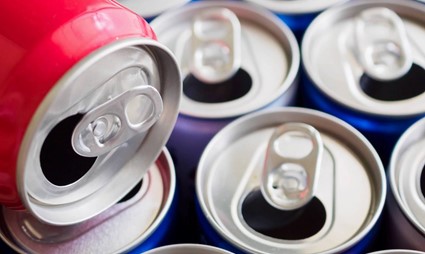A necker station is a part of the aluminum beverage can production process in which the diameter of the top section of the can is reduced to accommodate the smaller end.
This is how it works:
- The can, which is still cylindrical, is loaded onto an elevator.
- The axial movement of the elevator presses the open edge of the can against the outer tool.
- The upper edge of the can is bent inward and the diameter is cylindrically reduced by approximately 1 mm.
- The elevator is removed and the can is pushed out of the tool with compressed air.
- The can is then transported to the next station, where the diameter is further reduced following the same procedure.
This process is repeated in a total of 15 stations until the desired final diameter is reached.
The necker station, also known as a necker (Die Necker), is a machine used in the manufacturing process of aluminum cans for beverages. Its main function is to reduce the diameter of the can mouth through a series of tapers.
Before passing through the die necker, a kerosene film is applied to the top of the can to prevent wrinkling during the forming process. Then, the can is pressurized and its mouth is placed between Necking Die and Knockout punches to perform diameter reductions at different stations.
It is important that the uniformity in the thickness of the material and the conditions of the varnishes applied in this area are adequate, since the clearance between tooling (Necking Die – Knockout) and its geometry do not change during production.
Once the neck of the can has been formed, it is passed to the light tester, which checks whether it meets the established quality requirements. If the can meets standards, it is transported to the palletizing area, where it is packed and labeled according to customer/packer specifications.









